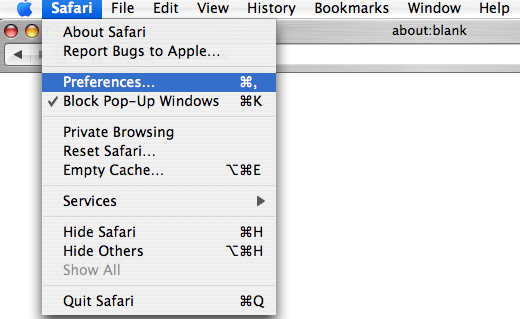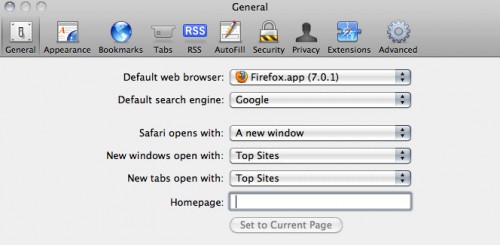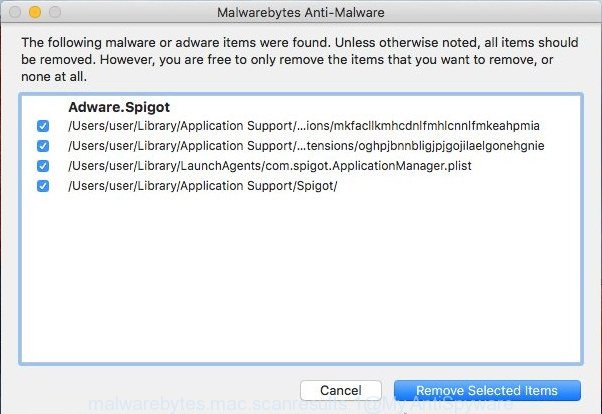What is ExtendedLibrary
ExtendedLibrary is an adware application. By definition, adware is a piece of applications that displays ads on a computer. However, people basically use the word ‘adware’ to describe a part of malware that shows unwanted ads to the user. In many cases, this kind of software do not have any uninstall procedures and can use technologies that are similar to those used by malware to penetrate the MAC.

Unwanted ads
Another reason why you need to remove adware is its online data-tracking activity. Adware software can gather your Web surfing activity by saving URLs visited, IP addresses, internet browser version and type, cookie information, Internet Service Provider (ISP) and web-sites visited. Such kind of behavior can lead to serious security problems or sensitive info theft. This is another reason why ExtendedLibrary should be removed immediately.
In the tutorial below, we will explain effective ways on how to delete ExtendedLibrary adware from your Mac and clean your web-browser of unwanted ads.
How does ExtendedLibrary get on your machine
Adware mostly comes on the computer with free software. In many cases, it comes without the user’s knowledge. Therefore, many users aren’t even aware that their Apple Mac has been affected by potentially unwanted applications and adware. Please follow the easy rules in order to protect your machine from adware and potentially unwanted apps: do not install any suspicious programs, read the user agreement and choose only the Custom, Manual or Advanced setup type, do not rush to click the Next button. Also, always try to find a review of the application on the Net. Be careful and attentive!
Threat Summary
| Name | ExtendedLibrary, Extended Library 1.0 app |
| Type | adware software, PUP (potentially unwanted program), pop ups, pop up virus, popup ads |
| Symptoms |
|
| Removal | ExtendedLibrary removal guide |
How to remove ExtendedLibrary
In the step-by-step tutorial below we will have a look at the adware and how to delete ExtendedLibrary ads from Chrome, Mozilla Firefox and Safari internet browsers for Mac, natively or by using a few free removal utilities. Read it once, after doing so, please bookmark this page (or open it on your smartphone) as you may need to close your internet browser or restart your Apple Mac.
To remove ExtendedLibrary, perform the steps below:
- Manual ExtendedLibrary removal
- Automatic Removal of ExtendedLibrary
- How to stay safe online
- Finish words
Manual ExtendedLibrary removal
This part of the blog post is a step-by-step guidance that will show you how to delete adware manually. You just need to follow every step. In this case, you do not need to download any additional tools.
Delete ExtendedLibrary associated software by using the Finder
We suggest that you start the MAC cleaning procedure by checking the list of installed software and remove all unknown or questionable applications. This is a very important step, as mentioned above, very often the harmful software such as adware software and browser hijacker infections may be bundled with freeware. Uninstall the unwanted applications can delete the annoying advertisements or browser redirect.
Open Finder and click “Applications”.

It will display a list of all software installed on your MAC system. Scroll through the all list, and delete any dubious and unknown apps. Right click to dubious program and select “Move to Trash”. Another method is drag the program from the Applications folder to the Trash.
Most important, scroll through the all list, and move to trash any unknown applications. Don’t forget, choose Finder -> Empty Trash.
Remove ExtendedLibrary adware from Firefox
This step will help you get rid of ExtendedLibrary ads, third-party toolbars, disable harmful plugins and restore your default startpage, newtab page and search engine settings.
First, run the Mozilla Firefox and click ![]() button. It will open the drop-down menu on the right-part of the web-browser. Further, click the Help button (
button. It will open the drop-down menu on the right-part of the web-browser. Further, click the Help button (![]() ) as shown in the figure below.
) as shown in the figure below.

In the Help menu, select the “Troubleshooting Information” option. Another way to open the “Troubleshooting Information” screen – type “about:support” in the web browser adress bar and press Enter. It will show the “Troubleshooting Information” page as shown in the following example. In the upper-right corner of this screen, click the “Refresh Firefox” button.

It will show the confirmation dialog box. Further, click the “Refresh Firefox” button. The Firefox will begin a task to fix your problems that caused by the ExtendedLibrary adware. After, it’s finished, press the “Finish” button.
Remove ExtendedLibrary adware from Google Chrome
This step will show you how to reset Google Chrome browser settings to default state. This can get rid of ExtendedLibrary ads and fix some browsing problems, especially after adware infection. However, your saved passwords and bookmarks will not be changed, deleted or cleared.
Open the Google Chrome menu by clicking on the button in the form of three horizontal dotes (![]() ). It will display the drop-down menu. Choose More Tools, then click Extensions.
). It will display the drop-down menu. Choose More Tools, then click Extensions.
Carefully browse through the list of installed addons. If the list has the plugin labeled with “Installed by enterprise policy” or “Installed by your administrator”, then complete the following tutorial: Remove Chrome extensions installed by enterprise policy otherwise, just go to the step below.
Open the Chrome main menu again, click to “Settings” option.

Scroll down to the bottom of the page and click on the “Advanced” link. Now scroll down until the Reset settings section is visible, as shown in the figure below and press the “Reset settings to their original defaults” button.

Confirm your action, press the “Reset” button.
Get rid of ExtendedLibrary from Safari
The Safari reset is great if your internet browser is hijacked or you have unwanted add-ons or toolbars on your browser, which installed by an malicious software.
Click Safari menu and select “Preferences”.

It will open the Safari Preferences window. Next, click the “Extensions” tab. Look for unknown and suspicious extensions on left panel, select it, then click the “Uninstall” button. Most important to remove all unknown plugins from Safari.
Once complete, click “General” tab. Change the “Default Search Engine” to Google.

Find the “Homepage” and type into textfield “https://www.google.com”.
Automatic Removal of ExtendedLibrary
Run malicious software removal utilities to remove ExtendedLibrary adware automatically. The free programs utilities specially designed for hijacker infections, adware software and other potentially unwanted programs removal. These tools can get rid of most of adware from Google Chrome, Firefox and Safari. Moreover, it can remove all components of adware software from Windows registry and system drives.
How to get rid of ExtendedLibrary with MalwareBytes Anti-Malware (MBAM)
Manual ExtendedLibrary adware removal requires some computer skills. Some files that created by the adware may be not fully removed. We suggest that use the MalwareBytes Anti Malware that are completely clean your Apple Mac of adware software. Moreover, this free tool will allow you to remove hijacker infection, malware, PUPs and toolbars that your MAC OS can be infected too.

Click the following link to download MalwareBytes Free.
20938 downloads
Author: Malwarebytes
Category: Security tools
Update: September 10, 2020
Once the downloading process is done, run it and follow the prompts. Click the “Scan” button to detect ExtendedLibrary adware. A scan can take anywhere from 10 to 30 minutes, depending on the number of files on your MAC OS and the speed of your MAC OS. While the MalwareBytes Free application is scanning, you can see number of objects it has identified as threat. Review the scan results and then click “Remove Selected Items” button.
The MalwareBytes Anti-Malware (MBAM) is a free program that you can use to remove all detected folders, files, malicious services and so on.
How to stay safe online
In order to increase your security and protect your MAC against new intrusive advertisements and malicious web pages, you need to run ad blocker application that stops an access to harmful ads and web pages. Moreover, the program can stop the display of intrusive advertising, that also leads to faster loading of web-pages and reduce the consumption of web traffic.

Installing the AdGuard is simple. First you’ll need to download AdGuard by clicking on the link below.
3752 downloads
Author: © Adguard
Category: Security tools
Update: January 17, 2018
When downloading is done, run the downloaded file. The “Setup Wizard” window will show up on the computer screen.
Follow the prompts. AdGuard will then be installed. A window will show up asking you to confirm that you want to see a quick guide. Click “Skip” button to close the window and use the default settings, or click “Get Started” to see an quick guidance which will help you get to know AdGuard better.
Each time, when you start your MAC OS, AdGuard will start automatically and stop undesired pop up ads, block malicious and misleading webpages.
Finish words
Now your MAC should be free of the ExtendedLibrary adware. We suggest that you keep AdGuard (to help you stop unwanted pop-ups and intrusive harmful websites) and MalwareBytes Anti-Malware (to periodically scan your machine for new malicious software, browser hijackers and adware). Make sure that you have all the Critical Updates recommended for Mac OS. Without regular updates you WILL NOT be protected when new hijacker infections, harmful applications and adware are released.
If you are still having problems while trying to remove ExtendedLibrary ads from your browser, then ask for help here.


















